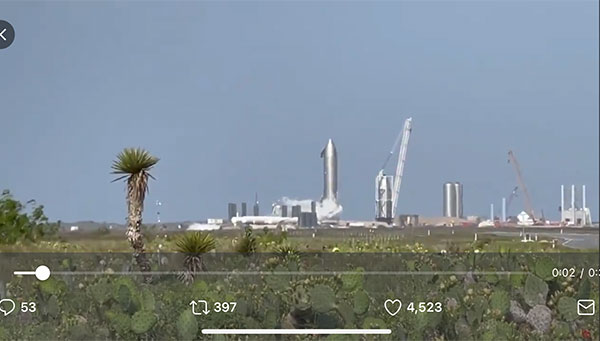Greetings from Palmia Observatory
Well the moon arrives at its closest approach at its elliptical orbit about the Earth and appears about 14% larger during this full moon. But, we had to wait for the clouds to part to get a clear image.
 |
| Full frame, 300mm, 1/30 second, DSLR super moon through the clouds (Source: Palmia Observatory) |
Luckily, the clouds did not completely cover up the full moon and we just had to wait a couple of minutes before a good shot was possible at about 8:30 pm.
 |
| Super Moon comes out of the clouds, DSLR, 300mm, 1/500 second (Source: Palmia Observatory) |
In other astronomy related events we sat in on a livestream event provided by Carnegie Observatories with a presentation by Tom Holoein on Stellar Snacks: Tidal Disruption Events: Stars Destroyed by Black Holes.
 |
| Stellar Snacks: Black Hole Tidal Disruption Events (Tom Holoein, Carnegie Observatory) |
Tidal Disruption Events (TDE) occur when another stellar object gets close enough to a black hole that the tidal forces can shred the object. Normally for weak gravitational fields, like near the Earth, the tidal forces on us are small, but when considered over the whole planet Earth, the tidal forces from the sun's gravitational field cause, yes, you guessed it, "tides."
The tidal forces caused by more compact objects like white dwarfs and neutron stars are strong enough to not just to cause the object to merge, but can begin to tidally disrupt and "spaghettify" the object. With black holes, the tidal forces are even more extreme. As material from the disrupted object accretes on the black hole, we have a chance to observe the light from that even and thereby learn something about the nature of the object and events.
But TDS's are normally far away from us and are hard to find and photograph so much of the analysis is done with simulations. But Tom did provide one photograph of an actual TDE. Hmm, can't really see much except the brightening of the object.
 |
| TDE's mostly in simulation, but here is an actual photo (Tom Holoein, Carnegie Observatory) |
Anyway, Tom finished up the talk with some of the still outstanding unknowns about black holes. There seems to be a range of intermediate black holes that are missing and not known if and why they are not present. At the same time, we are surrounded by millions of black holes in the Milky Way alone. Thanks for the talk, Tom!
 |
| TDE's tell us about Black Holes, but still many unknowns (Tom Holoein, Carnegie Observatory) |
Finally, we have an update on the Starship SN15 static fire test forwarded by Mary, @BocaChicaGal on the NASASpaceFlight twitter channel. Darn, I'm glad everything is going on schedule, but we had hoped to be able to fly down to Boca Chica and watch the SN15 test launch, but can't get down there this week, so we might miss actually being there for the test hop.
But you can get a sense of the test firing events by looking at these four still photos from a 36 second video of the test firing. First at 2 seconds into the video we see just some venting around the base of Starship SN15.
 |
| Getting ready for Starship SN15 static fire test (Source: Mary & @NASASpaceFlight) |
Then 3 seconds later, or 5 seconds into the video, we see the actual ignition of the three Raptor engines on SN15.
 |
| Starship SN15 static fire test (Source: Mary & @NASASpaceFlight) |
Then by less than 2 seconds later, the engines have shutdown and we just see the clouds of exhaust drifting away.
 |
| Starship SN15 static fire all over for this test (Source: Mary & @NASASpaceFlight) |
Finally, 34 second into the video, the exhaust clouds have moved out of the way and the Starship SN15 is still standing. Various tweets from other observers and from Elon himself say the static fire test was a success. The actual test hop could now be in a day or two if all of the analysis confirms the prototype is ready for the test hop. Good job, SpaceX: Wish we were there!
 |
| Hooray; Starship SN15 completes static fire test (Source: Mary & @NASASpaceFlight) |
Next time we will comment on some of the findings from the LISA Canada 2021 workshop.
Until next time, here from our burrow, stay safe, as we recover more of our freedom,

No comments:
Post a Comment